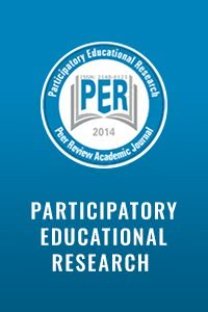ERRATUM: At the request of the author, it was appropriate to add the attached references to the bibliography of the publication mentioned below: Altındağ Kumaş, Ö . (2020). Effectiveness of The Big Math for Little Kids Program on the Early Mathematics Skills of Preschool Children with a Bilingual Gr
Öz ERRATUM At the request of the author, it was appropriate to add the attached references to the bibliography of the publication mentioned below: Altındağ Kumaş, Ö . (2020). Effectiveness of The Big Math for Little Kids Program on the Early Mathematics Skills of Preschool Children with a Bilingual Group . Participatory Educational Research , 7 (2) , 33-46 . DOI: 10.17275/per.20.18.7.2 References Aunio, P., Hautamäki, J., Sajaniemi, N., & Van Luit, J. E. (2009). Early numeracy in low‐performing young children. British Educational Research Journal, 35(1), 25-46. Bloom, P. (1970). Subjectless sentences in child language. Linguistic inquiry, 21(4), 491-504. Buran, A. (2009). Language Atlas of Eastern and Southeastern Anatolia. İstanbul:Biyografi net iletişim ve yayıncılık. Cummins, J. (2001). Bilingual education: Basic principles. In J. Dewaele, A. Housen and W. Li (Eds.), Bilingualism: Beyond basic principles. Clevedon: Multilingual Matters. Güven,Y.(1997). Validity, reliability, norm study of early mathematics Test-2, and ınvestigation of the effect of socio-cultural factors on mathematical ability.(Unpublished Doctorol Dissertation). Marmara University, Institute of Social Sciences, İstanbul. Güven, O. S. (2009). Adaptation of the Test of Early Language Development-Third Edition (TELD-3) into turkish: reliability and validity study. (Unpublished Master Dissertation). Anadolu University, Eskişehir. Halliday, M. A. K. (1975). Learning how to mean. In Foundations of language development (pp. 239-265). USA: Academic Press. Hong, H. (1999). Using storybooks to help young children make sense of mathematics. In J. Copley (Ed.), Mathematics in the early years (pp. 162–168). Reston, VA: National Council of Teachers of Mathematic. McCartney, K., & Taylor, B. A. (2009). Does higher quality early child care promote low‐income children’s math and reading achievement in middle childhood?. Child development, 80(5), 1329-1349. McLaughlin, B., Gesi Blanchard,A. & Osanai, Y. (1995). Assessing language development in bilingual preschool children. (Program Information Guide Series, 22). Washington, DC: National Clearinghouse for Bilingual Education. Myers, J. E. B. (1992). Steps toward forensically relevant research. Monographs of the Society for Research in Child Development, 57, 143–152. doi:10.1111/j.1540-5834.1992.tb00338. Orçan, M. (2013). A sample model for early childhood mathematics education: Building blocks. Eğitim ve Öğretim Araştırmaları Dergisi, 2(2), 1-13. Warren, S. F., & Yoder, P. J. (1998). Facilitating the transition from preintentional to intentional communication. Transitions in prelinguistic communication, 7, 365-385. Wilcox, M. J., & Shannon, M. S. (1998). Facilitating the transition from prelinguistic to linguistic communication. Transitions in prelinguistic communication, 7, 385-416.
Anahtar Kelimeler:
Erratum, Vol 7, Is 2., 10.17275/per.20.18.7.2
- ISSN: 2148-6123
- Yayın Aralığı: Yılda 6 Sayı
- Başlangıç: 2014
- Yayıncı: Özgen KORKMAZ
